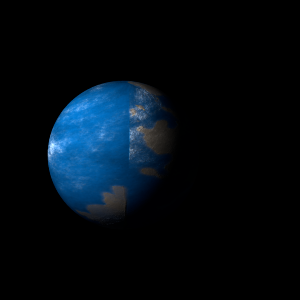|
|
Space Astro
|
Info for exoplanet "Youhwei Nwai"
| Scientific (actual) data |
|---|
| Planet | Kepler-636 b |
| Planet status | Confirmed |
| Radius | 0.397 |
| Orbital period | 16.0807 |
| Discovered | 2016 |
| Updated | 2021-02-05 |
| Tconj | 2455020 |
| Publication | Announced on a website |
| Detection type | Primary Transit |
| Alternate names | 2MASS J19342205+4105425 b, K00652.01, KIC 5796675 b, KOI-652 b, KOI-652.01, Kepler-636 A b, WISE J193422.04+410542.5 b |
| Star name | Kepler-636 |
| Right ascension | 293.59° |
| Declination | 41.1° |
| Mag j | 12.191 |
| Mag h | 11.692 |
| Mag k | 11.584 |
| Star distance | 341 |
| Star metallicity | -0.02 |
| Star mass | 0.85 |
| Star radius | 0.8 |
| Star age | 5.01 |
| Star temperature | 5203 |
| Star alternate names | 2MASS J19342205+4105425, KIC 5796675, KOI-652, Kepler-636 A, WISE J193422.04+410542.5 |
| Wikipedia article | Kepler-636 b |
Back
| |
| Fictional info (?) |
|---|
| Suggested name | Youhwei Nwai |
| Planet type | Cold planet |
| It has the longest rotation period (445 days) of any planet in its solar system and rotates in the opposite direction to most other planets.
This cold planet is named after the deity Youhwei Nwai, the goddess of the sky.
Youhwei Nwai's axis has the smallest tilt of any of its solar system's planets.
Youhwei Nwai is a cold planet and is sometimes called Merkyang's "brother planet" because of their similar size, mass, proximity to Kepler-636, and bulk composition.
Liquid water cannot exist on the surface of Youhwei Nwai due to low atmospheric pressure, which is less than 8 percent of Merkyang's, except at the lowest elevations for short periods. |
| Atmosphere | Nitric oxide | 91% |
| Helium | 6.5% |
| 2H2O | 1.3% |
| Sulfur dioxide | 0.25% |
| Atmospheric pressure | 0.017 bar |
 |
| No known satellites |
| Google search for Youhwei nwai |
|
Website by Joachim Michaelis
|
|
|
|